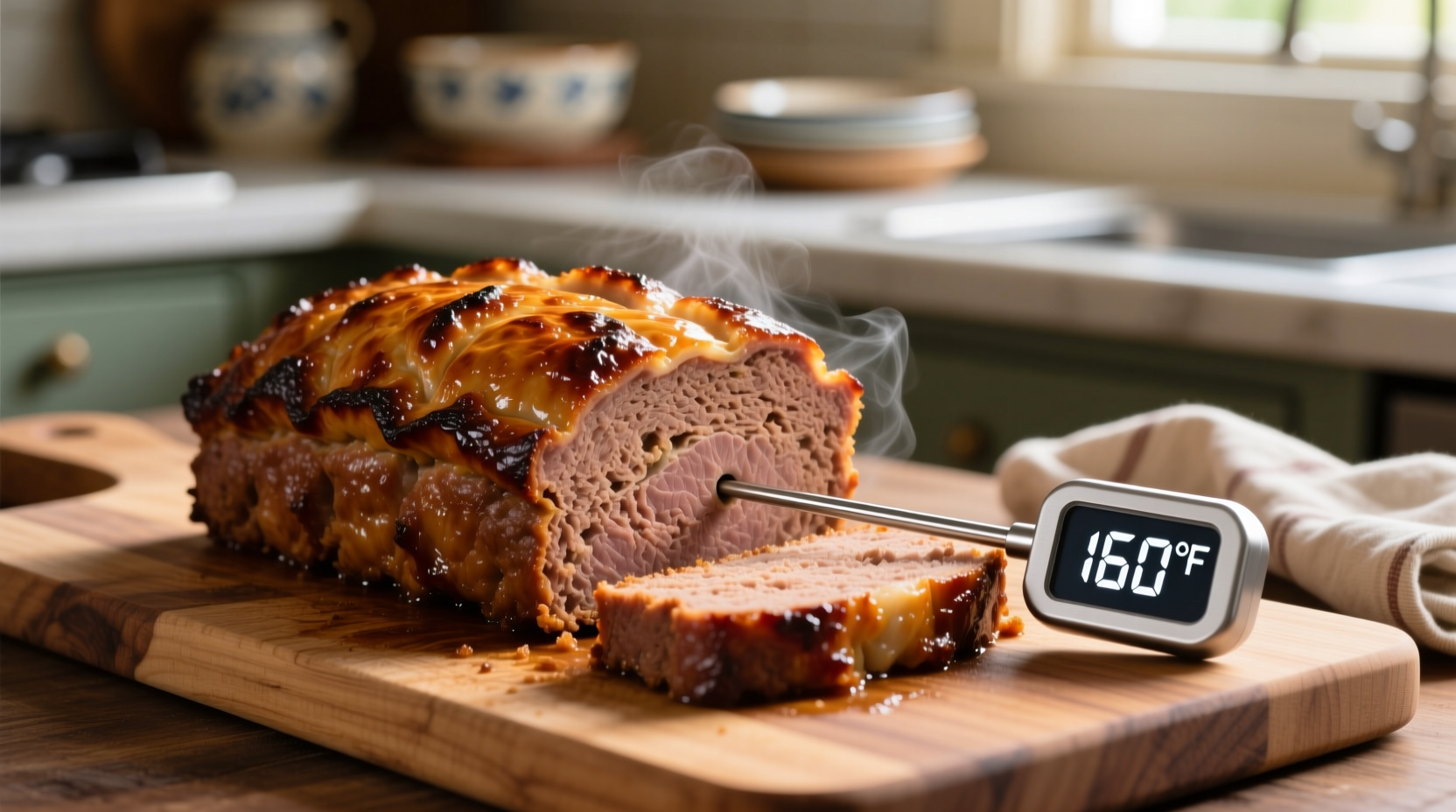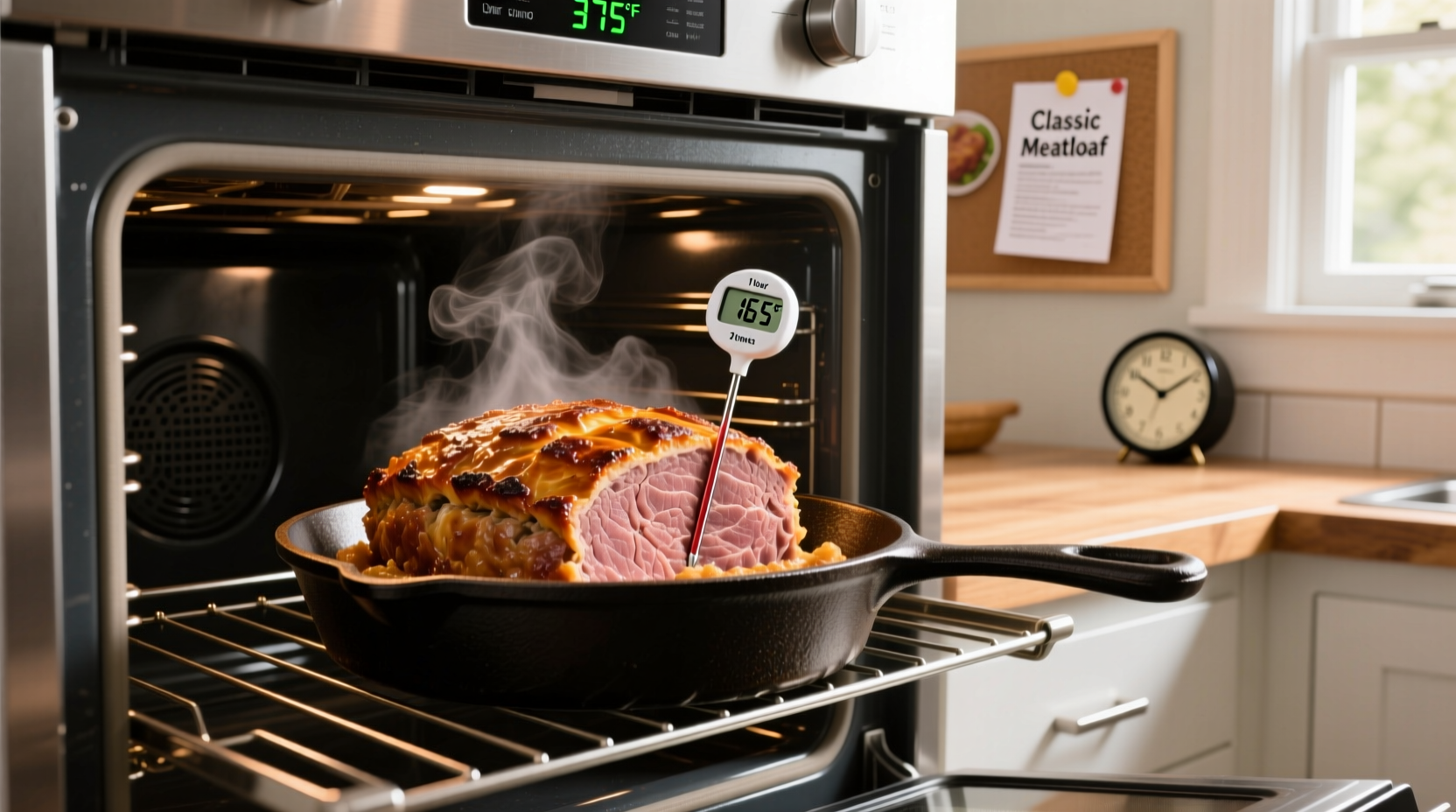Getting your meatloaf perfectly cooked isn't just about timing—it's about understanding the science behind ground meat cooking and recognizing the critical indicators of doneness. Whether you're preparing dinner for your family or hosting a special meal, knowing exactly how long to cook a 2 pound meatloaf prevents dry, crumbly results or, more importantly, undercooked meat that could pose health risks. In this comprehensive guide, you'll discover not only the precise cooking duration but also the essential factors that affect cooking time, reliable doneness tests, and professional tips for consistently perfect meatloaf.
Why Precise Cooking Time Matters for Meatloaf
Unlike whole cuts of meat, ground meat requires careful attention to cooking time and temperature. When you're asking how long do you cook a 2 pound meatloaf, you're really seeking the perfect balance between food safety and texture. Undercooked ground beef can harbor harmful bacteria like E. coli, while overcooking transforms your meatloaf into a dry, unappetizing brick.
The USDA Food Safety and Inspection Service specifies that ground beef must reach 160°F (71°C) to be safe for consumption. This temperature kills potentially harmful bacteria that may be present throughout the ground meat. For a 2-pound meatloaf, achieving this internal temperature typically takes 55-65 minutes at 350°F—but several factors can affect this timeframe.
Standard Cooking Guidelines for 2-Pound Meatloaf
Professional chefs and food scientists agree on these baseline recommendations for cooking time for 2 lb meatloaf:
| Oven Temperature | Estimated Cooking Time | Internal Temp Target |
|---|---|---|
| 325°F (163°C) | 65-75 minutes | 160°F (71°C) |
| 350°F (177°C) | 55-65 minutes | 160°F (71°C) |
| 375°F (191°C) | 45-55 minutes | 160°F (71°C) |
These times assume a standard meatloaf mixture (70% lean beef, 30% fat) shaped in a standard loaf pan. Remember that oven temperatures can vary by as much as 25°F, so always use an instant-read thermometer for accuracy when determining how long to cook meatloaf 2 pounds.

Factors That Affect Your 2-Pound Meatloaf Cooking Time
Several variables influence the actual cooking time for a 2 pound meatloaf, making it essential to understand these factors:
Meat Composition and Fat Content
Leaner ground beef (90% lean or higher) cooks faster but dries out more easily. Traditional meatloaf recipes using 70-80% lean beef require the standard 55-65 minute timeframe at 350°F. If you're using turkey or chicken meatloaf, cooking time may increase by 10-15 minutes due to lower fat content.
Shape and Container
A meatloaf baked in a standard loaf pan cooks differently than one formed freehand on a baking sheet. The loaf pan creates a more dense shape that requires additional cooking time—typically 5-10 minutes longer than a free-form loaf of the same weight. This is crucial information when determining how long to cook a 2 lb meatloaf in a loaf pan versus on a rack.
Additional Ingredients
Veggies like onions, carrots, and celery release moisture during cooking, which can extend the time needed to reach proper internal temperature. Similarly, wetter binders (like milk-soaked breadcrumbs) increase cooking time compared to drier alternatives.
How to Test for Perfect Doneness (Beyond Just Timing)
While knowing how long to cook a 2 pound meatloaf provides a good starting point, the only reliable method to ensure safety and quality is checking the internal temperature. Here's how to do it properly:
- Insert an instant-read thermometer into the center of the meatloaf, avoiding any pan edges
- Wait 10-15 seconds for an accurate reading
- Remove from oven when thermometer reads 155-160°F (the temperature will rise 5 degrees during resting)
- Let rest for 10-15 minutes before slicing
Visual indicators can supplement thermometer readings:
- Juices run clear, not pink
- Meat feels firm but not hard when pressed
- Crust is evenly browned (though this varies with glazes)
Troubleshooting Common Meatloaf Problems
Dry or Crumbly Meatloaf
If your 2-pound meatloaf turns out dry despite following recommended cooking time for meatloaf 2 lbs, consider these fixes:
- Increase fat content in your meat mixture (aim for 20-30% fat)
- Add moisture-rich ingredients like grated vegetables or a small amount of broth
- Reduce oven temperature by 25°F and extend cooking time slightly
- Always let meatloaf rest before slicing to redistribute juices
Meatloaf Falling Apart
When your meatloaf doesn't hold its shape, it's usually due to insufficient binding. For the perfect 2 lb meatloaf cooking time and texture:
- Use the right ratio of binder (1 egg per pound of meat plus 1/2 cup breadcrumbs)
- Don't overmix the meat mixture—just combine until ingredients are incorporated
- Let the mixture rest in the refrigerator for 15-30 minutes before shaping
- Avoid adding too many wet ingredients that break down the structure
Professional Tips for Perfect 2-Pound Meatloaf Every Time
After years of perfecting meatloaf techniques in professional kitchens, I've developed these evidence-based recommendations for achieving the ideal how long do you cook a 2 pound meatloaf result:
Temperature Consistency Is Key
Oven temperatures can fluctuate significantly. Place an oven thermometer inside to verify actual temperature. A 25°F variance can change your cooking time for 2 lb meatloaf by 10-15 minutes. This simple step dramatically improves cooking accuracy.
The Resting Period Matters
Never skip the 10-15 minute resting period after removing your meatloaf from the oven. During this time, the internal temperature continues to rise (carryover cooking), and the juices redistribute throughout the loaf. Cutting too soon releases precious moisture, resulting in dry meatloaf despite perfect 2 pound meatloaf cooking time.
Glaze Timing Affects Results
If using a glaze (ketchup, brown sugar, etc.), apply it during the last 15-20 minutes of cooking. Adding it too early can cause burning, while adding it too late prevents proper caramelization. This timing adjustment is essential when calculating how long to cook meatloaf 2 pounds with glaze.
Food Safety Considerations for Meatloaf Preparation
When preparing any ground meat product, including your 2-pound meatloaf, follow these critical food safety practices from the USDA Food Safety and Inspection Service:
- Keep raw meat refrigerated below 40°F until ready to use
- Wash hands thoroughly after handling raw meat
- Clean all surfaces and utensils that contact raw meat
- Cook to 160°F internal temperature—do not rely solely on color
- Refrigerate leftovers within 2 hours of cooking
Remember that visual cues alone cannot confirm doneness. The only reliable method to determine when your 2 pound meatloaf is done cooking is with a food thermometer.
How Meatloaf Cooking Recommendations Have Evolved
Understanding the historical context of meatloaf cooking times helps explain current best practices. Here's a brief timeline of how recommendations for how long to cook a 2 pound meatloaf have changed:
- 1940s-1960s: Meatloaf recipes often specified cooking times of 1.5-2 hours at 325°F, reflecting less precise oven technology and thermometer availability
- 1970s-1980s: Introduction of instant-read thermometers led to more precise temperature-based guidelines (160°F standard established)
- 1990s-2000s: Food safety concerns increased focus on internal temperature over time, with USDA formalizing 160°F requirement
- 2010s-Present: Modern understanding emphasizes resting time and carryover cooking, with more nuanced approaches for different meat compositions
This evolution shows why current recommendations for cooking time for a 2 pound meatloaf focus on internal temperature rather than strict timing alone.
When Standard Guidelines Need Adjustment
While the standard 55-65 minute timeframe works for most 2 lb meatloaf cooking time scenarios, certain conditions require modification:
- High-altitude cooking: Above 3,000 feet, increase cooking time by 5-10% as water boils at lower temperatures
- Convection ovens: Reduce cooking time by 25% or lower temperature by 25°F
- Frozen ingredients: If using frozen vegetables or meat, add 10-15 minutes to cooking time
- Dense mixtures: Meatloaves with substantial vegetable content may need additional time to reach safe internal temperature
Always prioritize internal temperature over strict timing when determining how long do you cook a 2 pound meatloaf under these special conditions.
Conclusion: Mastering Your 2-Pound Meatloaf Cooking Time
Now that you understand the precise how long to cook a 2 pound meatloaf, you can consistently produce safe, moist, and flavorful results. Remember that 55-65 minutes at 350°F is just a starting point—the critical factor is reaching 160°F internal temperature. By considering your specific ingredients, equipment, and conditions, and by always verifying with a thermometer, you'll achieve perfect meatloaf every time.
Don't rely solely on timing when preparing your 2 lb meatloaf cooking time—use this knowledge to adapt to your specific situation while maintaining food safety standards. With these professional insights, you're equipped to handle any meatloaf cooking scenario with confidence.











 浙公网安备
33010002000092号
浙公网安备
33010002000092号 浙B2-20120091-4
浙B2-20120091-4